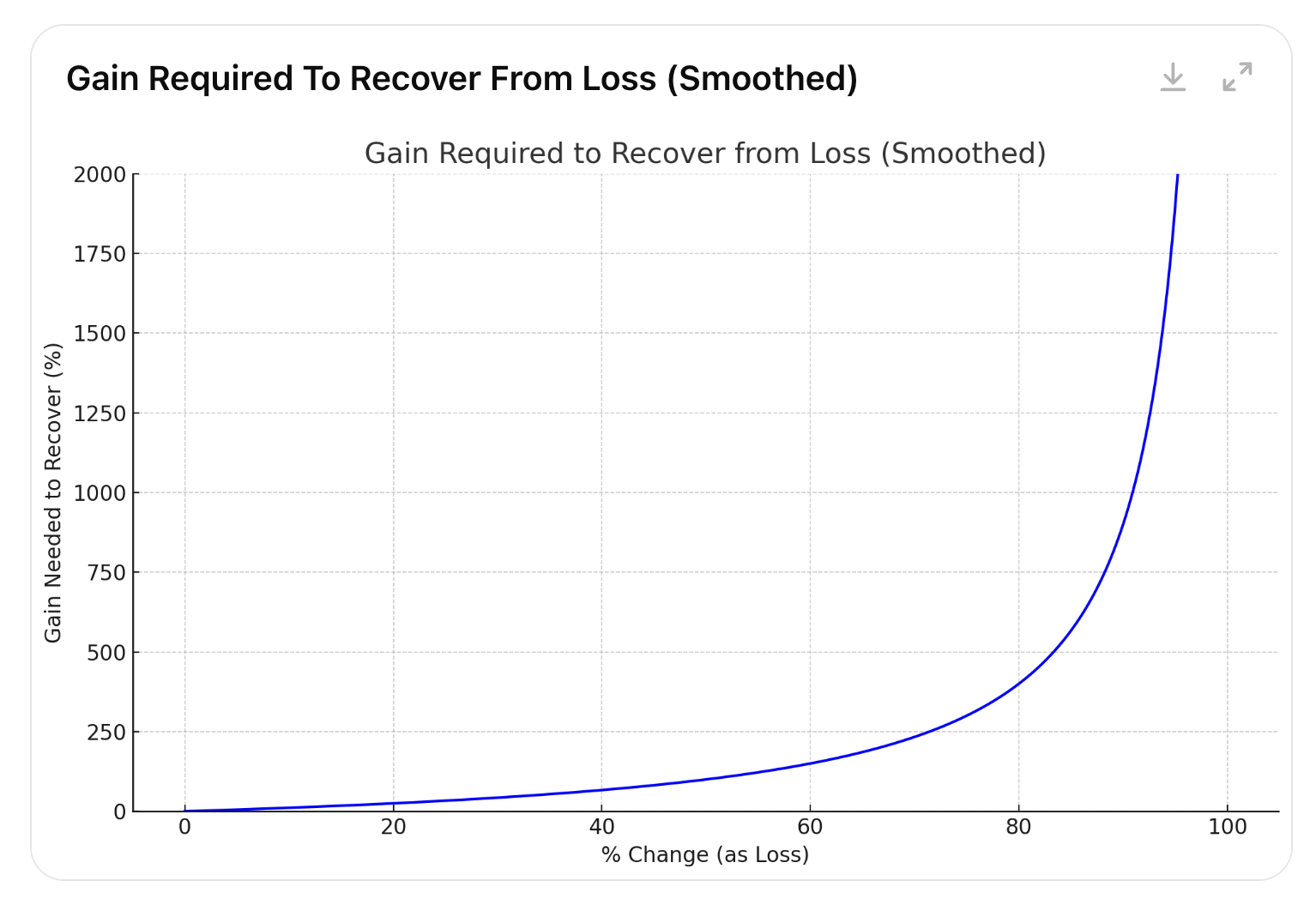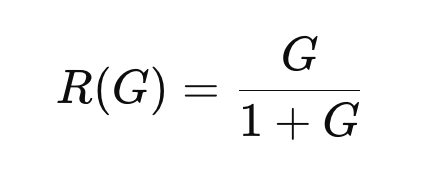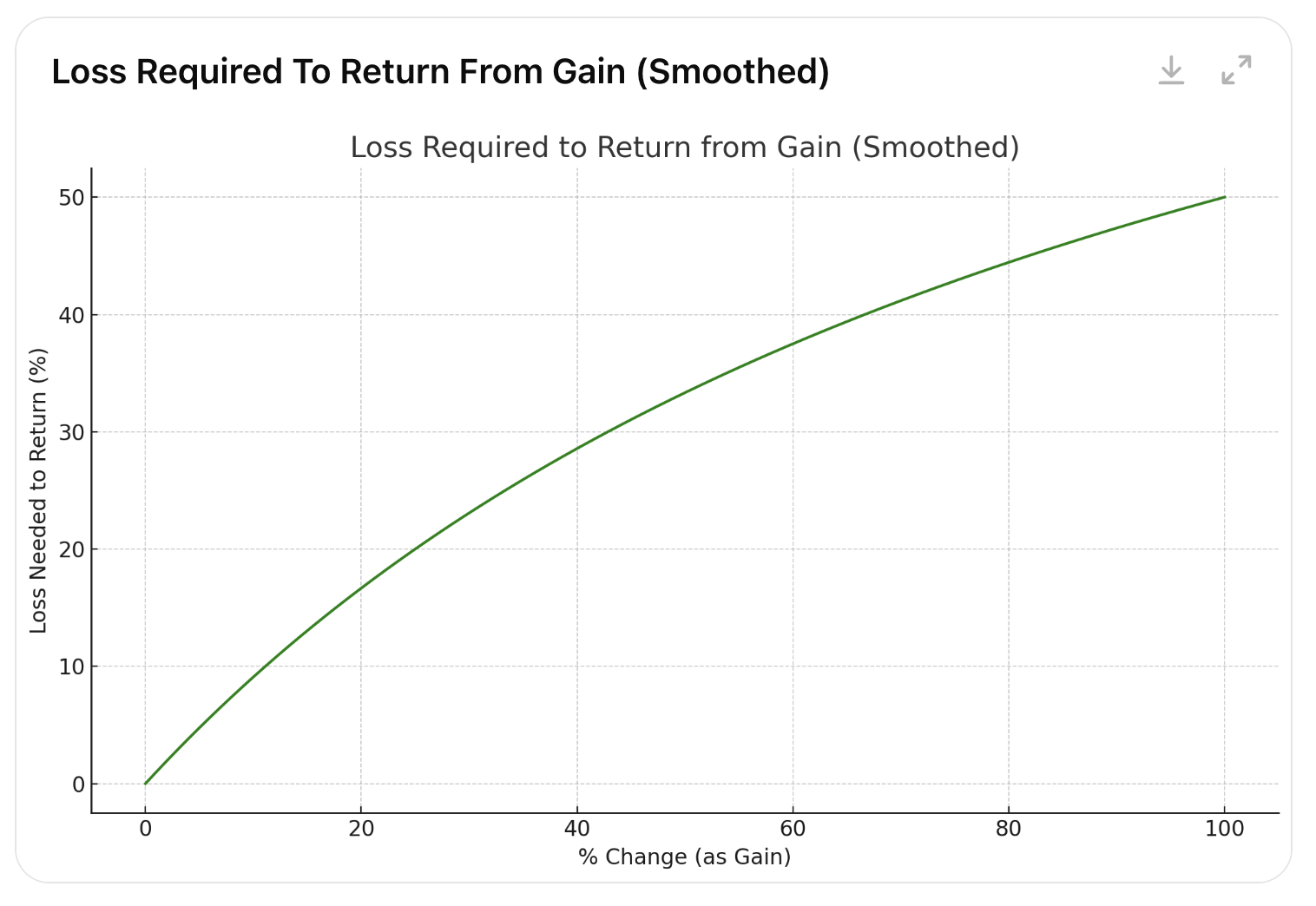This post was inspired by this graph:

Showing the stock market performance under different presidents in their first 100 days.
Wanted to do a very quick explainer on the difference between percentage going up or down, as just drawing them on a graph makes them appear symmetrically equivalent.
They aren’t, as losing 50% is nowhere near the same as gaining 50%. Losing 50% is much more bad than gaining 50% is good.
Relationship
When you lose 50% of your portfolio, you don’t just need to gain 50% back to recover what you lost. You now need to gain 100% back.
Example
If i have $10 and lose $5, I now need to gain $5 back, or 100% of my remaining $5.
When talking about gains, the relationship works in reverse.
If you gain 50%, you now don’t need to lose 50% to get back to your original value, you only need to lose 33%.
Example
If I have $10 and gain $5, I now have $15. Losing $5 (33% of $15) will get me back to $10
Functions
Let’s look at this relationship more closely
Table
% Change Gain Needed to Recover (%) (if Loss) Loss Needed to Return (%) (if Gain) 0% 0.00% 0.00% 5% 5.26% 4.76% 10% 11.11% 9.09% 15% 17.65% 13.04% 20% 25.00% 16.67% 25% 33.33% 20.00% 30% 42.86% 23.08% 35% 53.85% 25.93% 40% 66.67% 28.57% 45% 81.82% 31.03% 50% 100.00% 33.33% 55% 122.22% 35.48% 60% 150.00% 37.50% 65% 185.71% 39.39% 70% 233.33% 41.18% 75% 300.00% 42.86% 80% 400.00% 44.44% 85% 566.67% 45.95% 90% 900.00% 47.37% 95% 1900.00% 48.72% 100% ∞ 50.00%
You should notice that while the loss recovery accelerates to infinity, the gain return is actually slowing down. Lets show them on a graph to make this more obvious:
Graphs

So the slope goes to infinity and 0, respectively.
Lets take both of them to the limit:
Limit
if you lose 100% you need a ∞% gain to get back to the original amount.
If you gain ∞%, you need a 100% loss to get back to your original amount.
These are the functions:
 |  |
|---|---|
| Loss Recovery | Gain Rebound |
You’ll notice that they reverse each other:

In other words
- If you lose 40%, you need a 66.67% gain to recover.
- If you gain 66.67%, you need a 40% loss to fall back.
Inverted
This is an inverse relationship.
But it reveals something inherently unintuitive about math:
Important
The difference between 0 and 1 is the same as the difference between 1 and ∞.
The universe seems to operate not on absolutes, but on relativity.
In other words
If you scale down from 1 to 0, it takes the inverse path as scaling up from 1 to ∞. in this way, 1 can be thought of as the midpoint between 0 and ∞
This relationship is part of the fundamental Trick of Inequality, and the driver of the Power Law. It is what causes congregation in nature and forces things to accumulate. It may even be at the center of gravity itself.
If you’d like a super hot🥵 take that uses this premise, read the:
Source of the Ego
